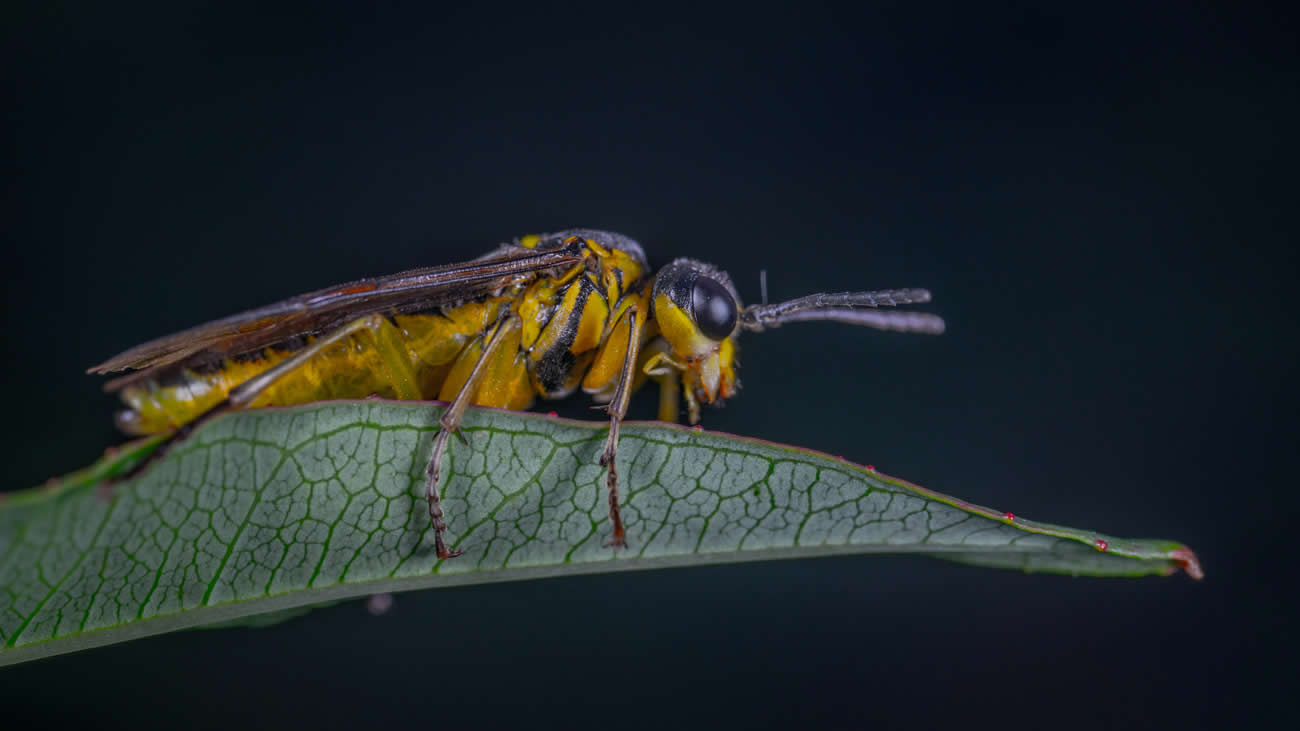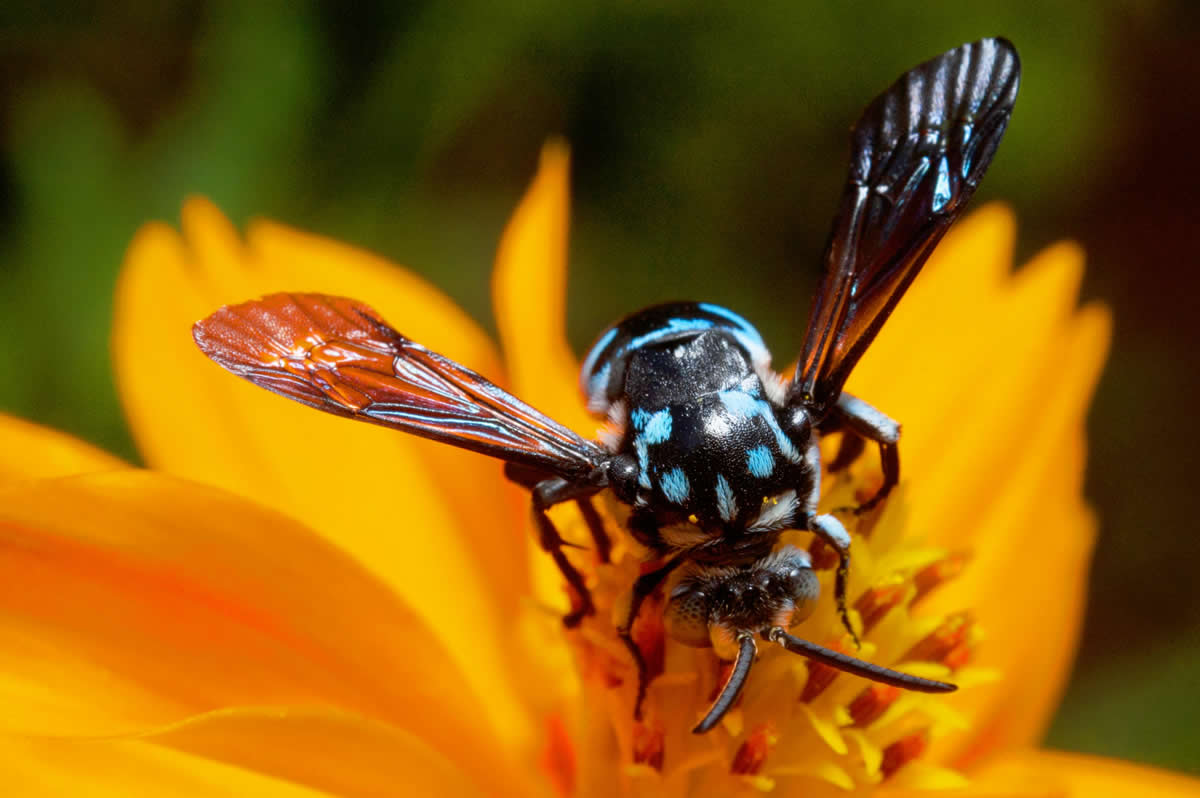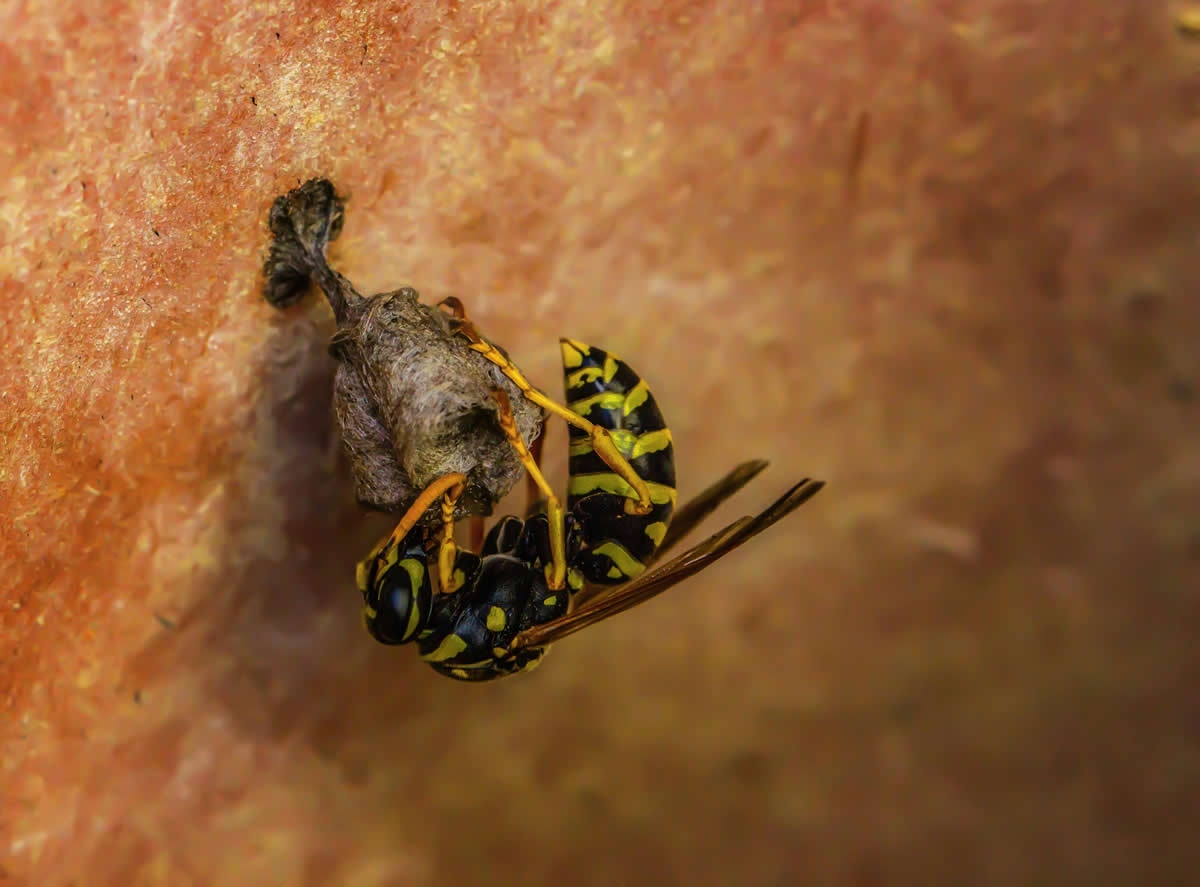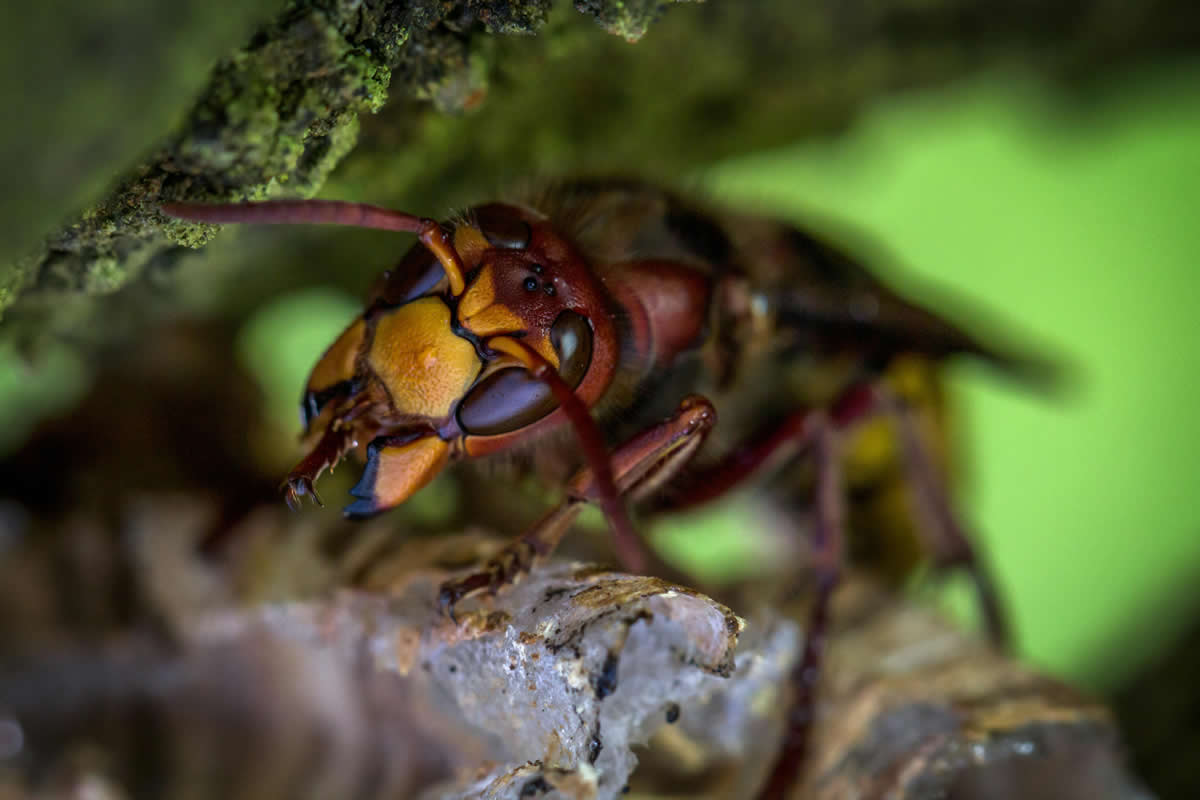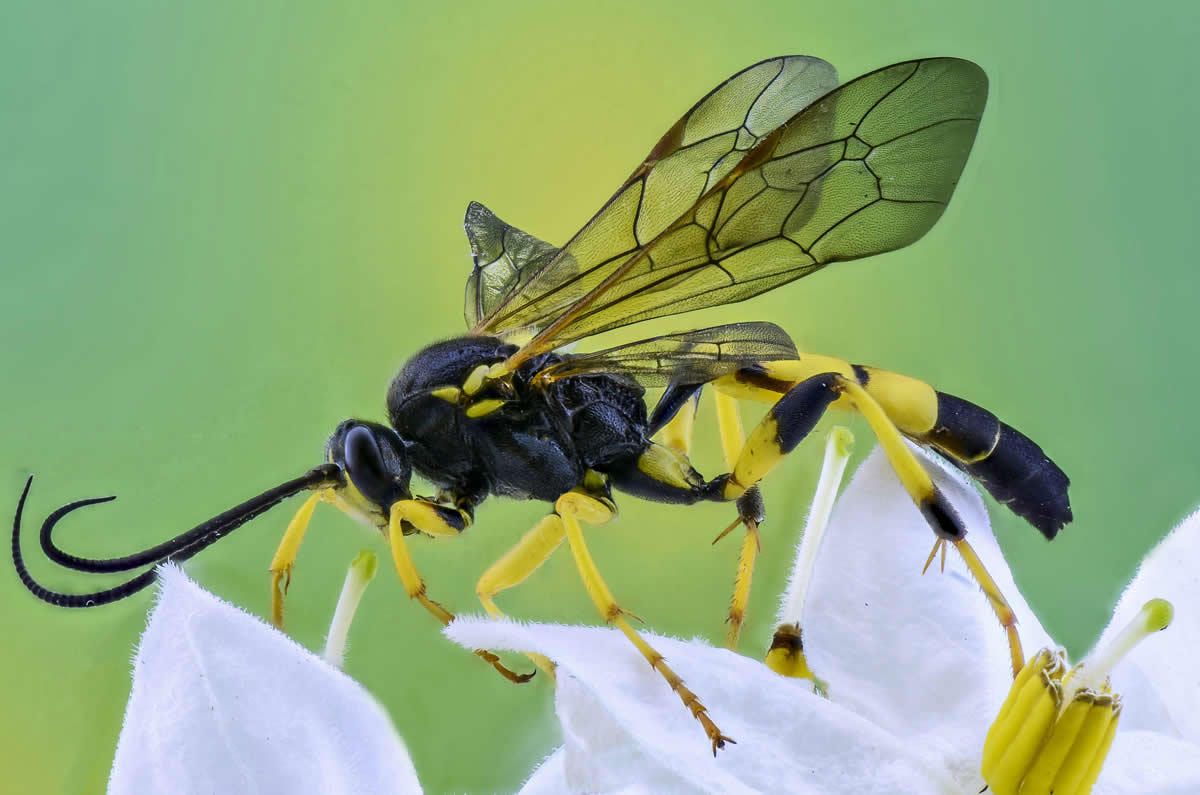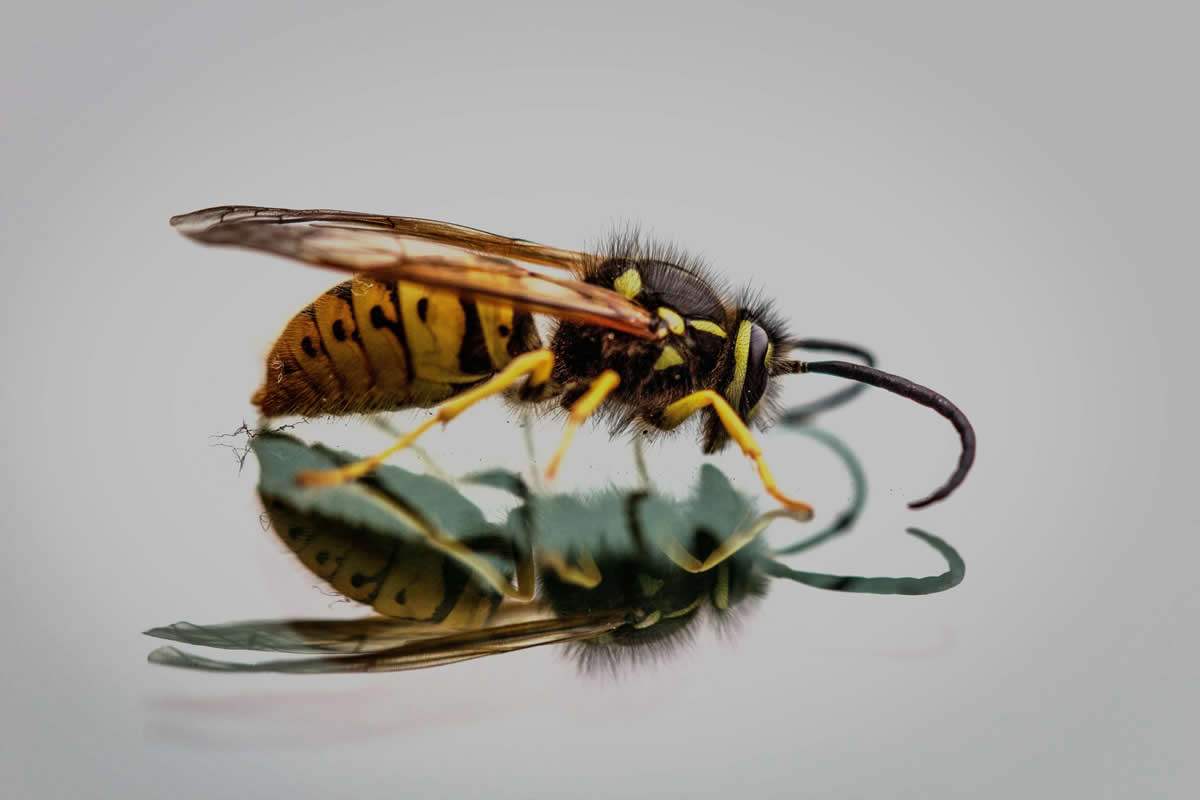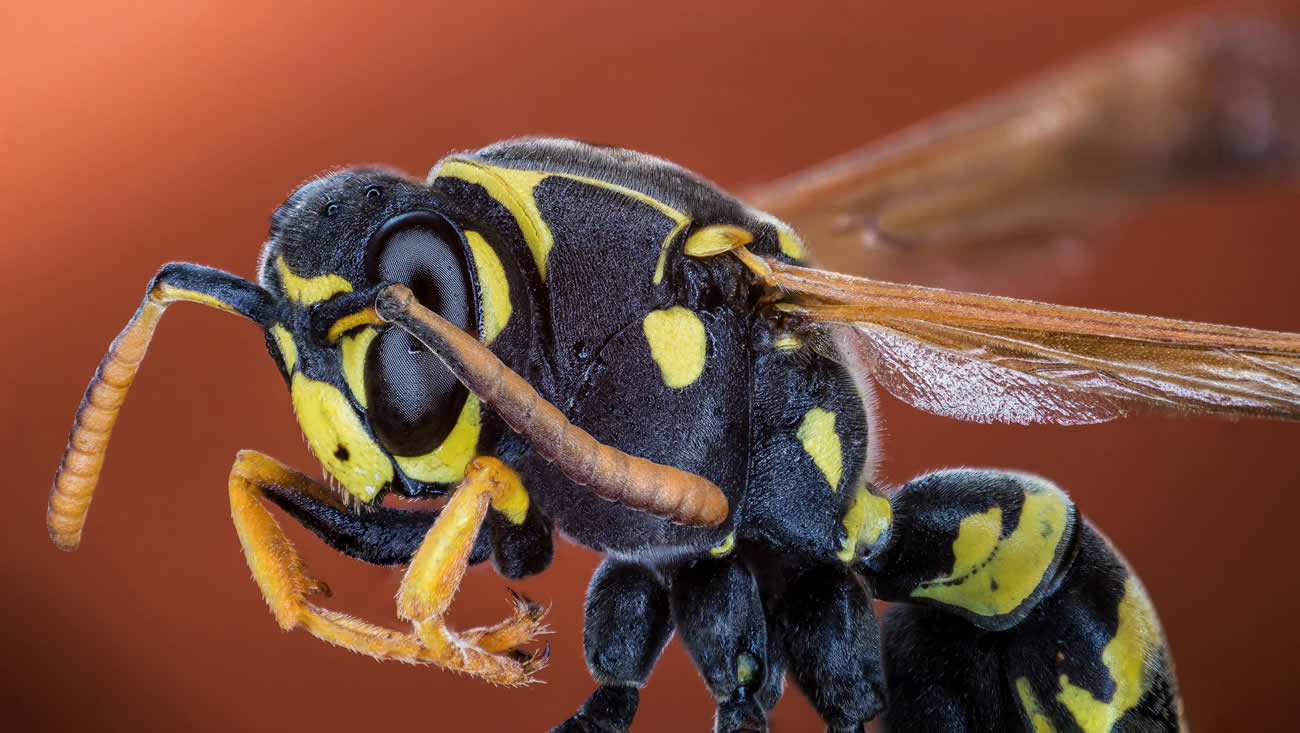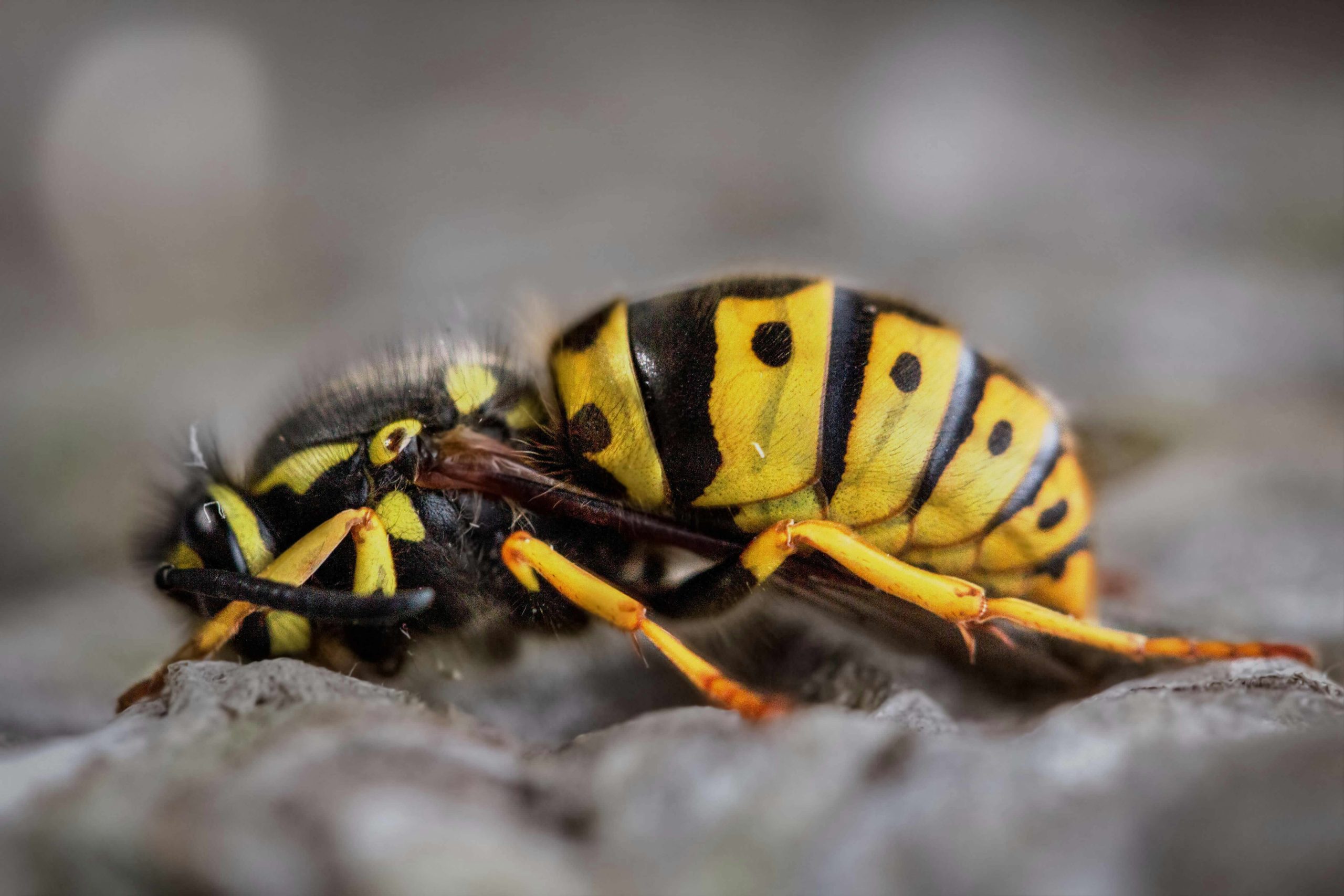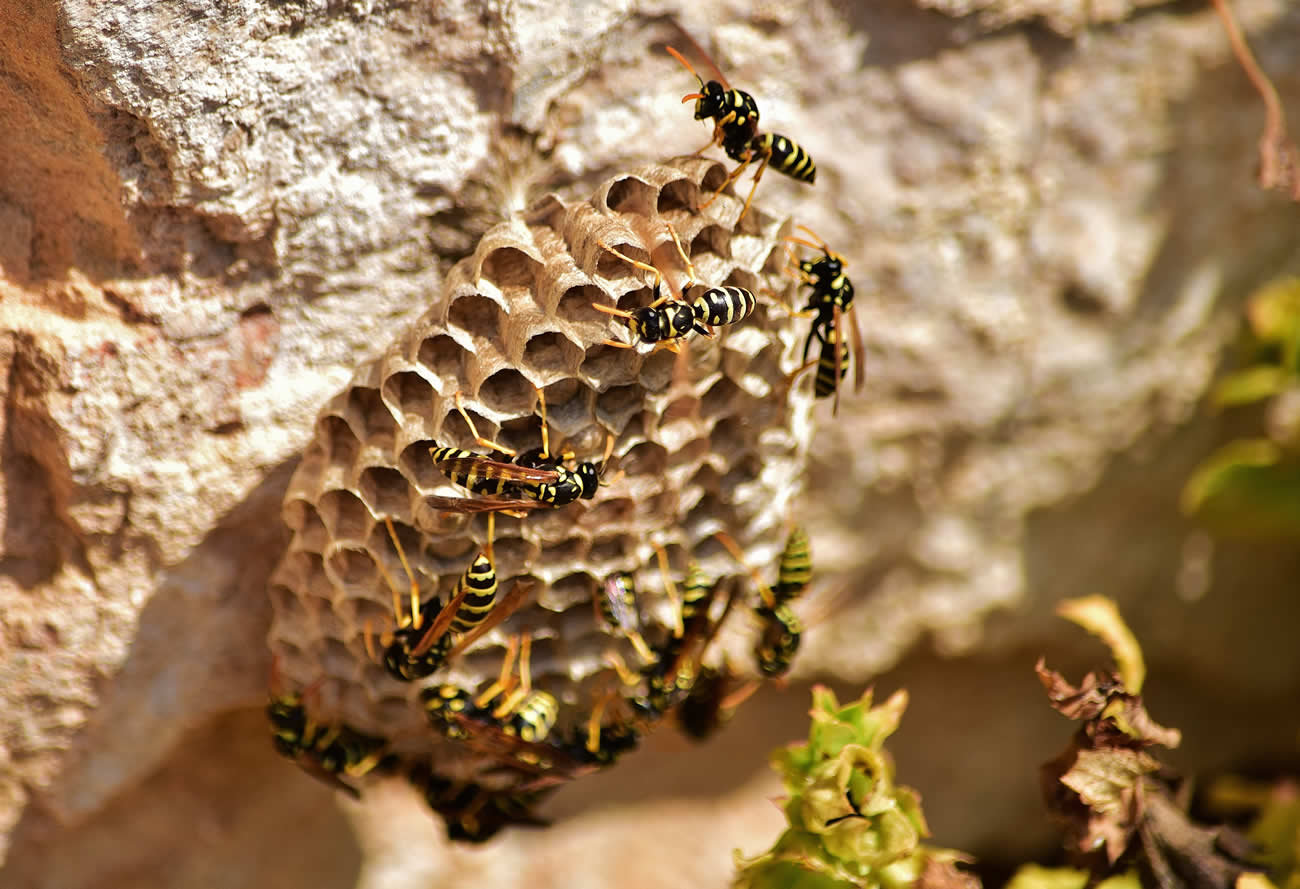Unlike bees, wasps can sting multiple times without dying, making their stings potentially more dangerous and painful. In fact, according to the Schmidt Sting Pain Index, wasp stings rate higher than bee stings, scoring 2-3 on the pain scale.
We often worry about what a wasp sting looks like and how long the symptoms will last. The initial jabbing pain typically starts within 15 minutes and lasts for 1-2 hours, however, the swelling and redness can peak around 48 hours after the sting. More concerning is that wasp stings cause potentially deadly allergic reactions in about 3% of adults and 1% of children.
In this guide, we’ll examine the typical appearance of a wasp sting, how to identify different types of reactions, and when you should seek medical attention. We’ll also explore how long various symptoms last and what distinguishes normal reactions from concerning ones.
Table of Contents
ToggleInitial Signs of a Wasp Sting
The moment a wasp’s stinger pierces your skin, you’ll feel a sharp, burning sensation that signals the start of your body’s response to the venom. This initial reaction marks the beginning of a series of distinct changes that occur within the first half hour after being stung.
The first 30 minutes
Immediately following a wasp sting, most people experience an intense burning sensation accompanied by a puncture wound where the stinger penetrates the skin. Throughout the next 30 minutes, the affected area becomes increasingly hot and may start to itch. Additionally, almost everyone develops an itchy, localised bump at the sting site within the first hour.
During these crucial first moments, your skin begins showing visible signs of the sting’s impact. The area typically becomes red and swollen, forming a distinctive welt around the point of contact. Notably, the pain and swelling usually start subsiding within 1 to 2 hours of the incident.
Key visual indicators
The appearance of a wasp sting follows a predictable pattern. Initially, you’ll notice:
- A raised welt surrounding the sting site
- A tiny discoloured mark in the middle where the stinger punctured
- Redness and inflammation in the surrounding area
- Swollen skin that feels warm to the touch
Furthermore, the affected area might develop into what medical professionals call a “large local reaction.” This occurs as the swelling expands beyond the immediate sting site, potentially affecting an area up to 10 centimetres across. The discolouration and swelling typically peak around 48 hours after the incident.
Difference from other insect stings
Wasp stings possess several unique characteristics that set them apart from other insect stings. Most significantly, wasps can sting repeatedly because their stinger remains intact, whereas honeybees lose their barbed stinger after one use. This capability makes wasp stings potentially more dangerous than bee stings.
Moreover, wasp venom contains a distinct mixture of compounds, including histamine, dopamine, and mast cell degranulating peptides. These substances work together to create the characteristic burning sensation and subsequent swelling that distinguishes wasp stings from other insect encounters.
The reaction to a wasp sting typically progresses differently from fire ant stings, which form small blisters within four hours. Conversely, wasp stings generally produce a more immediate swelling response without the formation of blisters unless infection occurs.
For proper identification, it’s worth noting that wasp stings often appear as a red bump surrounded by white skin. This distinctive appearance, combined with the immediate sharp pain and subsequent burning sensation, helps distinguish wasp stings from other insect encounters. Nevertheless, since wasps can sting multiple times, you might notice several of these marks clustered in one area.
How a Wasp Sting Changes Over Time
A wasp sting’s appearance changes distinctly as time passes, with symptoms evolving through specific stages. Understanding these changes helps identify whether your reaction falls within normal parameters.
Hours 1-4: Early changes
After the first hour, the burning sensation at the sting site typically starts to subside. Still, the affected area continues to show visible changes. The skin around the sting becomes increasingly swollen, forming a distinctive welt that might feel warm to the touch.
Throughout these early hours, you’ll notice:
- A raised, discoloured mark that feels itchy and painful
- Burning sensations that gradually decrease in intensity
- Swelling that continues to develop around the sting site
Days 1-2: Peak symptoms
The most noticeable changes occur within the first 48 hours after the sting. The swelling and discolouration reach their peak around this time. Specifically, the affected area might expand considerably, sometimes affecting a skin area up to 10 centimetres across.
For most people, the progression of symptoms follows this timeline:
First 24 Hours: The initial swelling continues to develop, while the pain gradually diminishes. The area might feel increasingly itchy rather than painful. Some people experience what medical professionals call a “large local reaction,” where the swelling affects an entire limb or extremity.
48-Hour Mark: This represents the peak period for most symptoms. The affected area typically shows:
- Maximum swelling
- Most intense discolouration
- Peak itchiness and discomfort
Certainly, the duration and intensity of symptoms vary among individuals. While most people see their symptoms begin to improve after 48 hours, others might experience prolonged effects. The skin discolouration often persists for about 3 days, whereas swelling can continue for up to a week.
Particularly, in cases involving multiple stings, additional symptoms might surface, such as:
- Fever
- Nausea
- Headaches
- Joint pain (which might develop several days after the sting)
For most individuals without allergies, these reactions remain localised and manageable. Nevertheless, if you notice the symptoms worsening beyond these typical patterns or spreading beyond the immediate area, seeking medical attention becomes advisable.
The healing process usually progresses steadily, with most people experiencing complete resolution of symptoms within a week. Throughout this period, the affected area gradually returns to its normal appearance and sensation, though the timeline varies depending on individual factors and the severity of the initial reaction.
Normal vs Concerning Symptoms
Distinguishing between normal and concerning symptoms after a wasp sting helps determine whether medical attention is needed. Most wasp stings cause predictable reactions that resolve naturally, although some cases require immediate care.
Expected reaction signs
A typical wasp sting produces several normal reactions that shouldn’t cause alarm. The standard response includes:
- Sharp pain and burning at the sting site
- A raised welt with a tiny puncture mark
- Localised redness and warmth
- Mild swelling around the affected area
- Slight itching sensation
These symptoms typically improve within 1-2 hours of being stung. For individuals without allergies, complete recovery usually occurs within a week.
When to worry
Notwithstanding normal reactions, certain symptoms warrant immediate medical attention. Call emergency services straightaway if you experience:
Breathing difficulties:
- Wheezing or gasping for air
- Tightness in throat or chest
- Trouble swallowing
- Hoarse voice
Circulatory changes:
- Rapid heart rate
- Severe blood pressure drop
- Dizziness or fainting
- Weak or racing pulse
Other serious indicators:
- Swelling of throat, lips, tongue, or mouth
- Hives spreading beyond the sting site
- Severe stomach cramps or vomiting
- Sudden confusion or drowsiness
Importantly, about 3% of adults and 0.8% of children have insect sting allergies. These individuals face a 60% chance of experiencing similar or worse reactions if stung again.
Signs of infection
Although uncommon, wasp stings can become infected, especially if scratched or not properly cleaned. Watch for these infection indicators:
Early warning signs:
- Increased pain or swelling after 24 hours
- Growing area of redness
- Warmth spreading beyond the sting site
- Pus discharge from the wound
Fundamentally, most wasp stings cause mild discomfort that resolves naturally. Yet, recognising the difference between normal and concerning symptoms remains crucial. Large local reactions, affecting an area up to 10 centimetres across, might appear alarming but typically don’t require emergency care. These reactions often peak within 48 hours and can persist for 5-10 days.
Nonetheless, stings inside the mouth, nose, or throat area demand immediate medical attention due to potential breathing complications. Similarly, multiple stings might trigger systemic reactions, presenting with fever, nausea, and headaches.
For those with known allergies, carrying an epinephrine auto-injector becomes essential. Upon experiencing severe symptoms, administer the auto-injector immediately and seek emergency care. Through proper awareness and prompt action, most wasp sting complications can be effectively managed.
Types of Wasp Sting Reactions
Wasp stings trigger varying degrees of reactions in different individuals, ranging from mild discomfort to life-threatening responses. Understanding these distinct reaction types helps identify when medical intervention becomes necessary.
Mild local reaction
A mild local reaction represents the most common response to a wasp sting. These reactions typically involve:
- Sharp or burning pain at the sting site
- Mild to moderate swelling
- Localised redness and warmth
- Pimple-like spots around the affected area
- Mild itching sensation
Most people experience these symptoms, which usually improve within a few hours after being stung.
Large local reaction
Subsequently, some individuals develop what medical professionals term a “large local reaction.” This response extends beyond the immediate sting site, causing:
- Swelling that spreads beyond 10 centimetres from the sting point
- Inflammation that might affect an entire limb
- Discomfort lasting 5-10 days
- Peak symptoms around 48 hours post-sting
Importantly, experiencing a large local reaction doesn’t necessarily indicate a higher risk of severe allergic responses in future stings. Research shows only 5-10% of people who have large local reactions develop anaphylaxis from subsequent stings.
Systemic reaction
Systemic reactions affect the entire body, presenting more serious concerns. These reactions might manifest as:
- Stomach cramps accompanied by intense nausea
- Sudden onset of diarrhoea
- Widespread warmth sensation
- Coughing or respiratory discomfort
- Anxiety and restlessness
Certain individuals face heightened risks of systemic reactions, including:
- Beekeepers
- Gardeners
- Refuse collectors
- People with mastocytosis
Allergic reaction signs
The most severe response manifests as an allergic reaction, affecting approximately 3% of adults and 0.8% of children. These reactions demand immediate medical attention upon showing these warning signs:
Immediate symptoms:
- Hives spreading beyond the sting site
- Rapid swelling of face, throat, or tongue
- Difficulty breathing or wheezing
- Problems swallowing
- Sudden drop in blood pressure
Additional indicators:
- Loss of consciousness
- Weak or racing pulse
- Severe dizziness
- Cardiac complications
Fundamentally, individuals who experience allergic reactions to wasp stings face a 60% likelihood of similar or worse responses in subsequent encounters. Therefore, those with known allergies should carry prescribed medication and take precautions to avoid future stings.
Medical professionals classify these allergic responses using the Mueller scale, which ranges from mild to severe manifestations. Interestingly, research indicates that the absence of skin symptoms often correlates with more severe systemic reactions.
How Long Different Symptoms Last
The duration of wasp sting symptoms varies significantly from person to person, with some experiencing brief discomfort while others face prolonged effects. Understanding these timelines helps manage expectations during recovery.
Pain duration
The initial sharp sensation from a wasp sting transforms into a burning pain that typically subsides within 1-2 hours. Throughout this period, most individuals notice the intensity gradually decreasing, making way for other symptoms like itching and swelling.
For those experiencing standard reactions, the pain progression typically follows this pattern:
- Immediate sharp, burning sensation
- Peak discomfort within the first hour
- A gradual reduction in pain intensity over 1-2 hours
Nonetheless, some individuals might experience lingering discomfort beyond the typical timeframe, primarily depending on:
- Location of the sting
- Individual pain tolerance
- Number of stings received
- Previous exposure to wasp venom
Swelling timeline
The swelling pattern after a wasp sting follows a predictable course, albeit with varying intensity among different individuals. Most people notice the following progression:
First 48 Hours: The swelling typically increases steadily, reaching its maximum extent around the 48-hour mark. At this stage, the affected area might expand considerably, sometimes affecting a region up to 10 centimetres across.
Days 3-7: After reaching its peak, the swelling begins a gradual decline. Yet, some individuals might notice persistent swelling lasting up to a week. This extended timeline proves particularly common in cases involving:
- Multiple stings
- Stings on sensitive areas
- Large local reactions
- Previous wasp sting encounters
Approximately 10% of people develop what medical professionals term a “large local reaction”. In such cases, the affected area might:
- Expand beyond 10 centimetres
- Take 5-10 days to fully resolve
- Show more intense swelling
- Present with increased warmth and redness
Beyond swelling, other symptoms follow distinct timelines:
- Skin discolouration typically persists for 3 days
- Heat sensation at the sting site lasts 24-48 hours
- Itching might continue intermittently throughout the healing process
Most individuals experience complete symptom resolution within a week. Yet, the healing timeline might extend in cases involving:
- Multiple stings in close proximity
- Stings near joints or sensitive areas
- Pre-existing skin conditions
- Compromised immune systems
Fundamentally, while most wasp sting symptoms resolve within hours or days, certain individuals might face prolonged effects. Monitoring these symptoms against typical timelines helps identify whether the healing process progresses normally or requires medical attention.
Our Final Say!
Understanding wasp sting symptoms and their progression helps distinguish between normal reactions and dangerous situations that require immediate medical attention. While most people experience mild discomfort lasting a few days, others might face more severe reactions that demand swift intervention.
A typical wasp sting causes sharp pain, swelling, and redness that peaks within 48 hours. These symptoms usually resolve naturally within a week. Nevertheless, anyone experiencing breathing difficulties, widespread hives, or severe swelling should seek emergency care immediately.
People with known allergies face higher risks from wasp stings, making it essential to carry prescribed medication and avoid areas where wasps gather. Though significant local reactions might look alarming, they rarely indicate future severe allergic responses. Armed with this knowledge, you can better assess your situation and make informed decisions about seeking medical help after a wasp sting.
Are you looking for pest control in Hampshire? Get in touch with us and a local pest removal company will be in touch.

